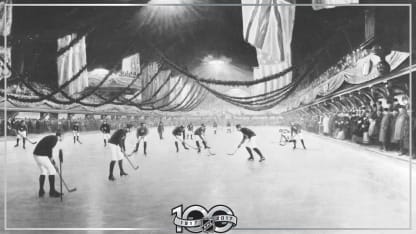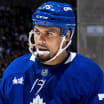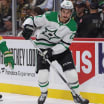Hockey itself was already well-established in Canada. But the games were casual, played outdoors on frozen lakes and rivers, and did not have codified rules.
That all changed when two nine-man teams made up mainly of students at McGill University, one of which was captained by Creighton, met in a game that was divided into two halves. It lays claim to the distinction of being the first organized ice hockey game because of the factors that link it to modern hockey: Two teams, goaltenders, a referee, a puck, a predetermined set of rules (Creighton reportedly introduced an early version of the offside rule) and length of time (60 minutes), as well as a recorded score (Creighton's team reportedly won 2-1).
With no boards around the rink, another change was that the indoor version of hockey didn't use a lacrosse ball. Instead, the game was played with a square piece of wood that was less likely to fly off the ice and wasn't as dangerous to players or spectators - a precursor to today's puck.
The Victoria Rink's ice surface, which had been home to events such as figure skating and speed skating, was measured at about 204 feet long and 80 feet wide; those dimensions are close to today's NHL standard of 200-by-85. The nine-man limit was a concession to moving the game indoors; outdoor games had been limited only by the number of players who could fit on a pond or river and could mean dozens of players on each team. By the 1920s, the game was down to the six-a-side structure used for more than 90 years.
The Gazette reported the next day that "a very large audience gathered to watch a novel contest on the ice," though that number was undoubtedly fewer than the 21,288 fans who pack Bell Centre for every Canadiens game today.
Two years later, Creighton published a set of rules for ice hockey; they became known as Montreal Rules, which allowed replacement of injured players and standardized rink measurements. The indoor game began to spread across the country; 18 years after the first indoor game, competition for the Stanley Cup began after Lord Stanley, the Governor General of Canada, became enthused about hockey and donated a trophy to be awarded to the nation's top-ranked amateur club.
Photo Courtesy of Hockey Hall of Fame

















